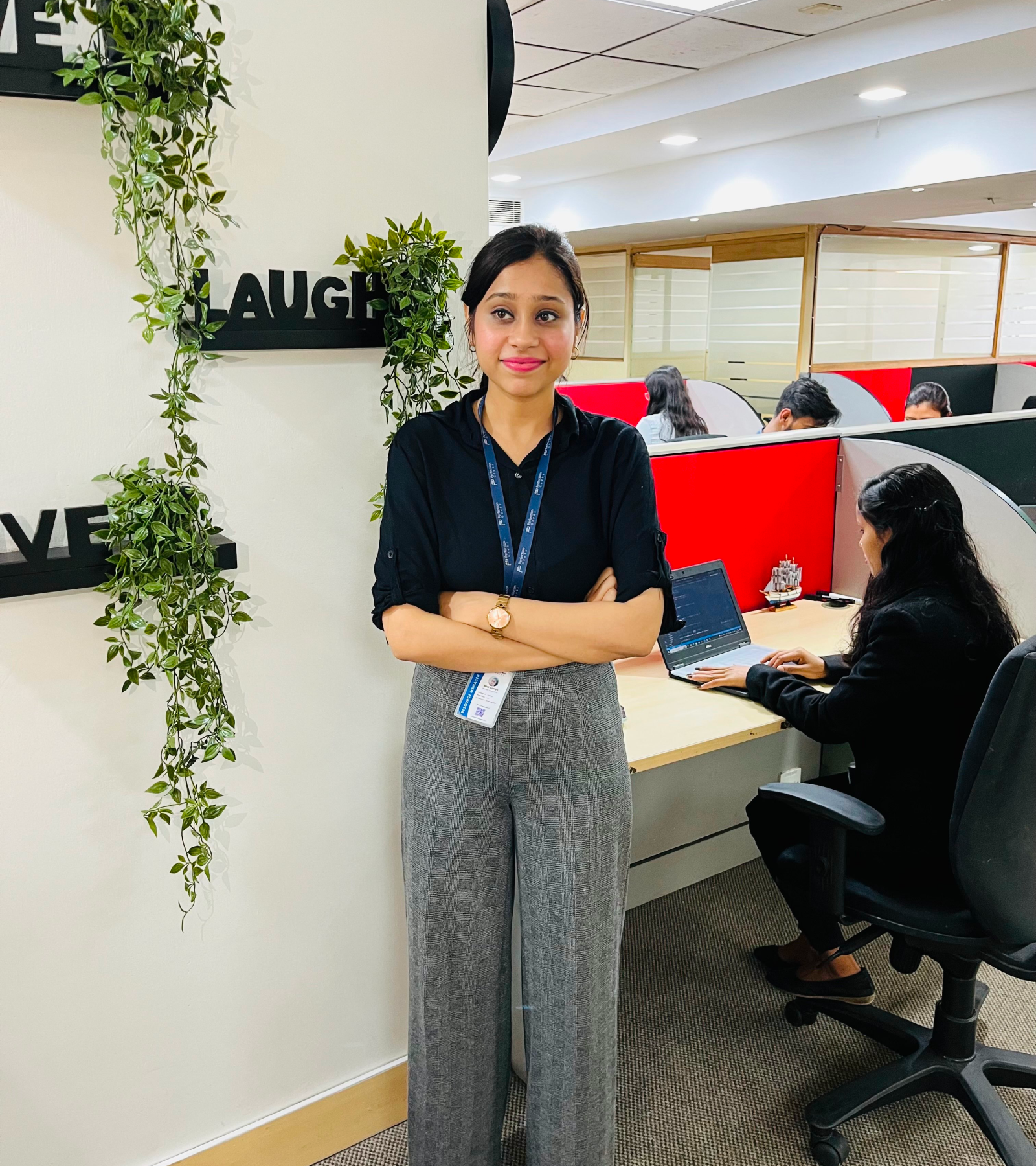Hire Dart Developers

JUL, 24, 2024 16:45 PM
Hire Dart Developers
In today's rapidly evolving digital landscape, mobile app development remains pivotal for innovation and business expansion. Seamless user experiences across platforms are paramount, making the choice of programming language critical. Dart, pioneered by Google, has emerged as a potent language for mobile app creation, especially with the rise of Flutter, a robust cross-platform framework. This guide delves into hiring Dart developers for mobile app development, from understanding Dart's significance to implementing effective hiring strategies. Dart's appeal lies in its simplicity, efficiency, and suitability for both web and mobile applications. Flutter further enhances its value by enabling developers to build high-performance apps for iOS, Android, and the web from a single codebase. Businesses keen on leveraging Dart benefit from cost-effective development, streamlined maintenance, and scalable solutions. Effective hiring strategies involve defining project needs, sourcing skilled candidates through diverse channels, and conducting thorough assessments. By embracing Dart and Flutter, companies can propel their app development initiatives forward, ensuring they meet modern user expectations and market demands with agility and innovation.
Section 1: Introduction to Dart and Its Role in Mobile App Development
Dart, introduced by Google in 2011, is a modern, open-source programming language designed for building web, server, and mobile applications. It was initially conceived as an alternative to JavaScript, aiming to address the shortcomings of JavaScript in terms of performance, scalability, and developer productivity. Dart combines the best features of statically typed and dynamically typed languages, offering a familiar syntax that is easy to learn for developers coming from languages like Java or C#.
Brief History: Dart emerged from Google's efforts to improve web development with a language that could be both fast in execution and developer-friendly. Over the years, Dart has evolved through several versions, with significant updates enhancing its capabilities and integration with various development frameworks.
Features:Dart is characterized by its simplicity, efficiency, and scalability. Key features include:
- B Typing:Dart supports both b and optional static typing, allowing developers to catch errors early and improve code robustness.
- Just-in-Time (JIT) and Ahead-of-Time (AOT) Compilation: Dart offers flexibility with JIT compilation during development for fast iterations and AOT compilation for efficient production deployment.
- Asynchronous Programming: DART simplifies asynchronous programming with async/await syntax, facilitating the development of responsive and performant applications.
- Object-Oriented:Dart is object-oriented with support for classes, interfaces, and mixins, enabling developers to organize code into reusable components.
Advantages over Other Languages: Compared to JavaScript and other languages used for web and mobile development, Dart offers several advantages:
- Performance: Dart's efficient compilation of native code ensures high performance, suitable for both frontend and backend applications.
- Productivity: With clean syntax and powerful tools like Dart DevTools, developers can write, analyze, and debug code effectively, enhancing productivity.
- Scalability:Dart's support for both small-scale projects and large-scale applications makes it suitable for startups and enterprise-level solutions alike.
Flutter Framework

Flutter, created by Google, is a comprehensive UI toolkit for creating natively collected applications across mobile, web, and desktop from a single codebase. Flutter uses Dart as its primary programming language, leveraging Dart's strengths to provide a consistent and high-performance development experience across platforms.
Introduction to Flutter: Flutter is designed to simplify and accelerate the app development process by allowing developers to write code once and deploy it across multiple platforms. It uses a reactive framework, where changes to the app's state automatically update the UI, providing a smooth and responsive user experience.
Architecture: Flutter's architecture revolves around widgets, which are building blocks for constructing the user interface. Everything in Flutter is a widget, from structural elements like buttons and text inputs to complex layouts and animations. This widget-based approach enables developers to create custom designs, handle user interactions, and manage app states efficiently.
Why Dart for Flutter Development? Dart's suitability for Flutter development stems from its performance optimizations and developer productivity enhancements. Key reasons include:
- Hot Reload: Dart's hot reload feature in Flutter allows developers to instantly see changes made to the code reflected in the running app, facilitating rapid iteration and debugging.
- Consistency: Dart's consistent syntax and reactive programming model align well with Flutter's widget-based architecture, enabling seamless integration and development.
- Tooling and Support: Dart's robust tooling, including IDE plugins, Dart DevTools, and comprehensive documentation, supports developers throughout the app development lifecycle.
Market Adoption
Flutter and Dart have seen significant adoption and growth within the mobile app development industry.
- Developer Community: Flutter has garnered a vibrant and growing developer community, contributing to its ecosystem with libraries, packages, and resources.
- Industry Adoption: Many startups, enterprises, and independent developers have adopted Flutter for building cross-platform applications due to its performance, productivity gains, and cost-effectiveness.
- Case Studies: Several successful apps, including those by major companies like Google, Alibaba, and Reflectly, showcase Flutter's capabilities in delivering native-like experiences across iOS and Android platforms.
- Current Trends: In recent years, Flutter has gained momentum as a preferred choice for cross-platform development, driven by its continuous improvements, b community support, and Google's ongoing investment in its ecosystem.
Section 2: Why Hire Dart Developers?
Hiring skilled Dart developers is crucial for leveraging the full potential of Flutter and delivering high-quality mobile applications. This section delves into the specific reasons why businesses should consider hiring Dart developers:
- Expertise in Dart and Flutter: Skills required to develop robust, cross-platform mobile applications.
- Cost Efficiency: Exploring how Dart's efficiency can lead to cost savings in development and maintenance.
- Scalability and Performance: How Dart's performance optimizations contribute to scalable app solutions.
- Community and Support: Overview of the Dart and Flutter community, resources, and support available for developers.
Section 3: Fundamental Skills and Qualities of Dart Developers
To ensure successful mobile app development using Dart and Flutter, it's essential to understand the key skills and qualities that distinguish proficient Dart developers:
- Proficiency in Dart Programming: Mastery of Dart language fundamentals and advanced features.
- Experience with Flutter: hands-on experience in developing apps with Flutter, understanding its widget system, and state management.
- Problem-Solving Skills: Ability to troubleshoot and resolve complex issues in Dart and Flutter applications.
- UI/UX Design Awareness: Understanding of UI/UX Principles and Best Practices in Mobile App Development.
Section 4: How to Hire Dart Developers
Effective hiring strategies are crucial for attracting and retaining top Dart talent. This section provides a step-by-step guide on how to hire Dart developers:
- Define Requirements: Clearly outline project requirements, including skills, experience level, and project scope.
- Sourcing Candidates: Explore different channels for finding Dart developers, such as job boards, professional networks, and developer communities.
- Screening and Interviewing: Techniques for evaluating Dart developers, conducting technical assessments, and assessing cultural fit.
- Freelance vs. Full-time: Considerations when hiring freelancers versus full-time employees for Dart development projects.
- Onboarding and Integration: Best practices for onboarding new Dart developers into existing teams or projects.
Section 5: Challenges and Solutions in Hiring Dart Developers
Despite its benefits, hiring Dart developers can present challenges. This section manages common hindrances and provides solutions:
- Skill Shortages: Strategies for overcoming shortages of experienced Dart developers.
- Remote Work Dynamics: Managing remote Dart developers and Fostering Effective Communication.
- Competitive Market: Attracting top Dart talent amidst competition from other tech companies.
Section 6: Future Trends in Dart and Mobile App Development
Looking ahead, understanding future trends in Dart and mobile app development can provide insights into upcoming opportunities and challenges:
- Advancements in Dart: Predictions for Dart language enhancements and new features.
- Emerging Technologies: Impact of AI, AR/VR, and IoT on Dart and Flutter Development.
- Industry Adoption: Expected growth and adoption of Flutter and Dart in different sectors.
Conclusion
In conclusion, hiring Dart developers for mobile app development offers numerous advantages in terms of efficiency, scalability, and cross-platform capabilities. By understanding Dart's role in Flutter development, defining clear hiring strategies, and staying abreast of industry trends, businesses can effectively leverage Dart's capabilities to build cutting-edge mobile applications.
This guide equips businesses and hiring managers with the knowledge and insights needed to navigate the complexities of hiring Dart developers, ultimately enabling them to drive innovation and deliver exceptional mobile experiences in today's competitive landscape.
Frequently Asked Questions (FAQs)
Q1: What is Dart, and why is it used for mobile app development?
A1: Dart is a programming language developed by Google, known for its efficiency and suitability for building web, server, and especially mobile applications. It's particularly favored for mobile app development due to its integration with Flutter, a UI toolkit for creating natively compiled applications across platforms from a single codebase.
Q2: What are the key skills I should look for when hiring Dart developers?
A2: When hiring Dart developers, look for proficiency in Dart programming, hands-on experience with the Flutter framework, knowledge of mobile app development principles, UI/UX design awareness, and b problem-solving abilities. These skills ensure developers can effectively build and maintain high-quality mobile applications.
Q3: How can hiring Dart developers benefit my business?
A3: Hiring Dart developers can benefit your business by enabling cost-efficient development through Flutter's single codebase for multiple platforms. Dart's performance optimizations contribute to scalable and responsive applications, while its growing community provides ongoing support and resources, enhancing the reliability and maintainability of your mobile apps.
Q4: What are the challenges in hiring Dart developers, and how can they be overcome?
A4: Challenges in hiring Dart developers include skill shortages, competition from other tech companies, and effectively managing remote teams. Overcome these challenges by defining clear job requirements, leveraging multiple sourcing channels, conducting thorough screening and technical assessments, and fostering a supportive work environment conducive to remote collaboration.
Q5: What are the future tendencies in Dart and mobile app development?
A5: Future trends in Dart and mobile app development include advancements in Dart language features, integration with emerging technologies likeAI, AR/VR, andIoT, and increased adoption across various industries. Staying updated on these trends can help businesses anticipate opportunities and adapt their mobile app strategies to remain competitive in the evolving digital landscape.
Strategy
Design
Blockchain Solution
Development
Launching
Testing
Maintenance
Contact US!
India

Plot 378-379, Udyog Vihar Phase 4 Rd, near nokia building, Electronic City, Phase IV, Sector 19, Gurugram, Haryana 122015
Copyright © 2025 PerfectionGeeks Technologies | All Rights Reserved | Policy
Strategy
Design
Blockchain Solution
Development
Contact US!
India 
Plot 378-379, Udyog Vihar Phase 4 Rd, near nokia building, Electronic City, Phase IV, Sector 19, Gurugram, Haryana 122015
USA 
1968 S. Coast Hwy, Laguna Beach, CA 92651, United States
Copyright © 2025 PerfectionGeeks Technologies | All Rights Reserved | Policy






